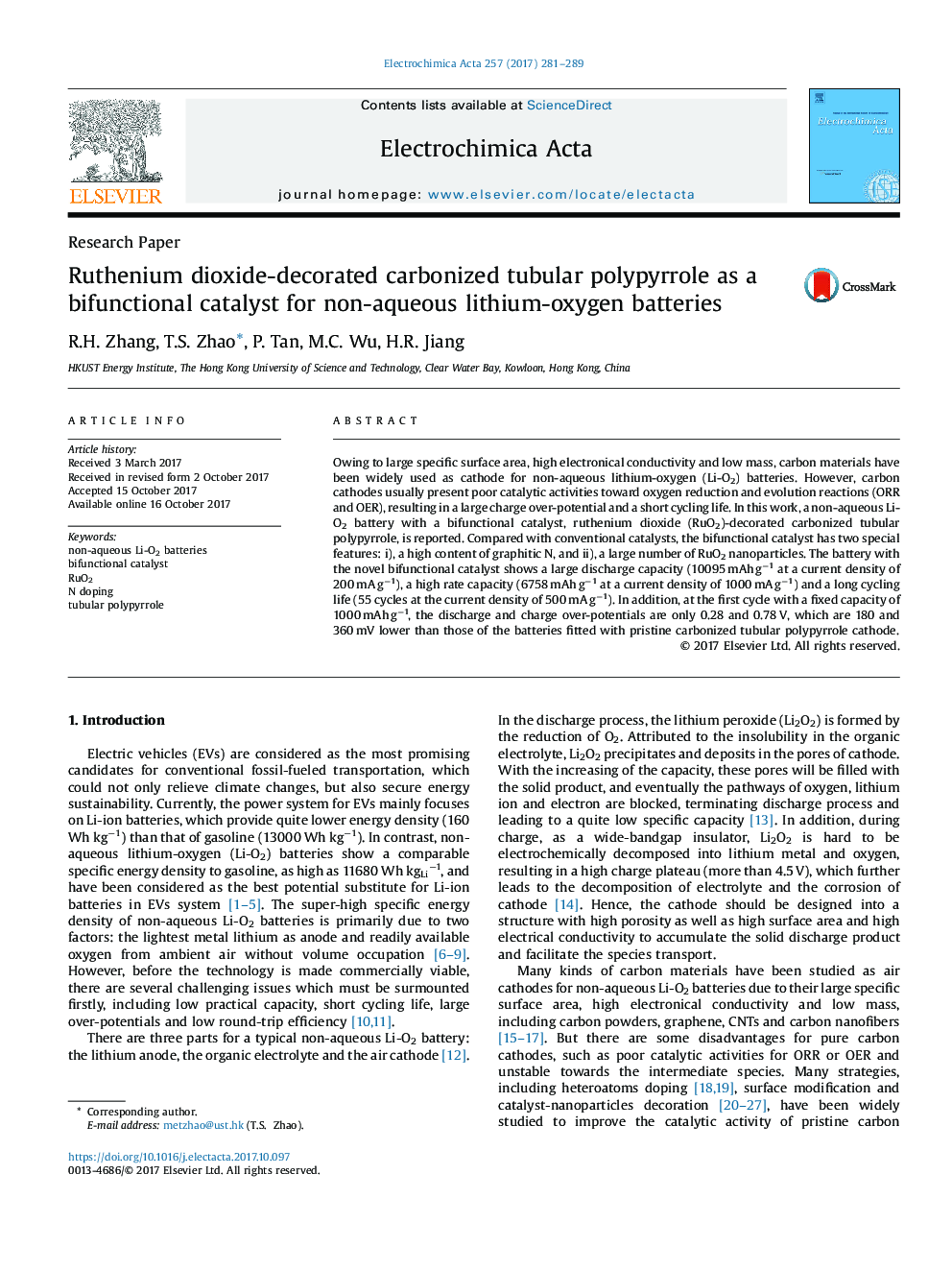| Article ID | Journal | Published Year | Pages | File Type |
|---|---|---|---|---|
| 6605336 | Electrochimica Acta | 2017 | 9 Pages |
Abstract
Owing to large specific surface area, high electronical conductivity and low mass, carbon materials have been widely used as cathode for non-aqueous lithium-oxygen (Li-O2) batteries. However, carbon cathodes usually present poor catalytic activities toward oxygen reduction and evolution reactions (ORR and OER), resulting in a large charge over-potential and a short cycling life. In this work, a non-aqueous Li-O2 battery with a bifunctional catalyst, ruthenium dioxide (RuO2)-decorated carbonized tubular polypyrrole, is reported. Compared with conventional catalysts, the bifunctional catalyst has two special features: i), a high content of graphitic N, and ii), a large number of RuO2 nanoparticles. The battery with the novel bifunctional catalyst shows a large discharge capacity (10095 mAh gâ1 at a current density of 200 mA gâ1), a high rate capacity (6758 mAh gâ1 at a current density of 1000 mA gâ1) and a long cycling life (55 cycles at the current density of 500 mA gâ1). In addition, at the first cycle with a fixed capacity of 1000 mAh gâ1, the discharge and charge over-potentials are only 0.28 and 0.78 V, which are 180 and 360 mV lower than those of the batteries fitted with pristine carbonized tubular polypyrrole cathode.
Keywords
Related Topics
Physical Sciences and Engineering
Chemical Engineering
Chemical Engineering (General)
Authors
R.H. Zhang, T.S. Zhao, P. Tan, M.C. Wu, H.R. Jiang,
